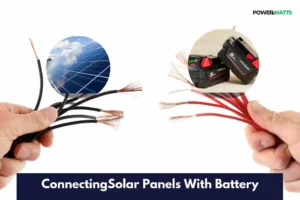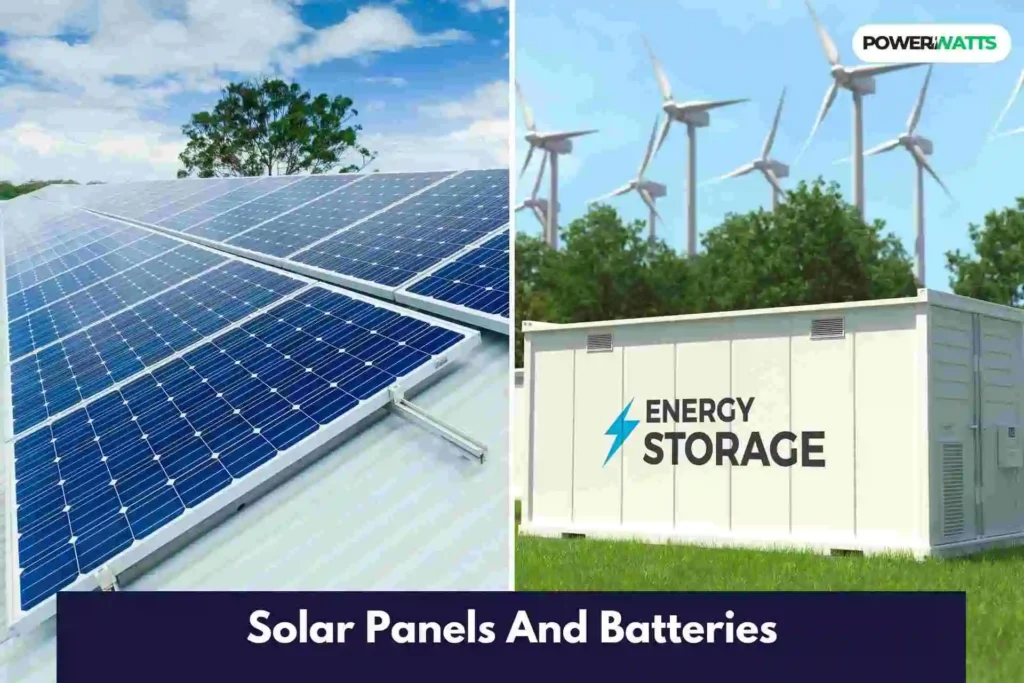Imagine using solar energy to run your house 24/7. Solar panels and batteries storage make this idea possible. Solar panels are great at turning sunshine into power, but what happens after the sun sets? Traditional systems use the grid to cover the gap, limiting energy independence and cost savings. Battery storage is the game-changer. It stores extra solar energy at peak production periods like a sunny superhero.
Battery storage and solar panels provide more than financial benefits. Homeowners may maximize solar energy use by using battery technology to store extra electricity produced during peak sunshine hours and use it at night or on overcast days. The financial consequences of this coupling are significant.
An initial expenditure may seem overwhelming, but long-term power bill reductions may be enormous. When combined with battery storage, solar panels may cut energy expenditures by 90% for many houses.
This blog will discuss it is with to connect solar panels with battery storage and whether can we save investment by using these methods. So do not wait, Join us to discover whether Is Battery Storage Worth It with Solar Panels.
Understanding Solar Battery Storage
We utilize little batteries to store energy, and your solar battery storage systems are enormous rechargeable energy stores that you can charge and discharge when you need electricity.
Batteries may be placed as independent devices and charged from the grid during low tariffs, or as part of a solar system to consume extra energy during daylight hours.
Some batteries have their inverter, while others employ a hybrid inverter for the battery and solar PV installation. Depending on your demands and energy use, a battery storage system may lower your energy expenditures and offer backup during power outages.

Connecting Solar Panels With Battery Storage
Using solar batteries to store energy is a key part of getting the most out of solar panels for home energy production. Solar screens collect sunshine and turn it into power during the day.
Any extra energy is saved in a solar bank and can be used later. This saved energy turns into a useful resource because it provides power after dark or when it’s cloudy, so you don’t have to rely on the grid for a steady supply of energy.
Using solar panels and batteries together not only makes energy use more efficient but also saves a lot on power bills. I believe This makes them a great choice for environmentally friendly and effective home energy use.
Is Battery Storage Worth It with Solar Panels?
In the United States, buying solar panels and batteries can save you a lot of money on your power bills and it is really worth it. According to my experience, the exact amount will depend on your home’s type, how much energy it uses, and the prices of energy in your area.
Average Saving With Solar Panels
- Single-Family Homes: By putting up solar panels, US homeowners can save up to $1,200 a year on their energy costs. The savings can go up by another 16% when battery storage is added, which could mean saving $1,400 per year.
- Half-detached homes: Putting in solar panels can cut your power bills by almost 75%, which means you’ll save about $1,150 a year. If you add battery storage, you’ll save even more, or 18%.
- Bungalows: Putting up solar panels on your home could save you about $800 a year. This goes up to about $950 a year when battery storage is added, which is more than 70% of the normal energy price.
- For townhouses, solar panels can save up to $600 a year, and battery storage can make that amount go up to $750 a year, which is an increase of more than 20%.
Long-Term Financial Benefits
Solar cells and battery storage can be expensive at first, but the money you save in the long run often makes it worth it. The average cost of adding solar panels depends on the size of the home. For smaller homes, the cost is around $5,000 while the cost for bigger homes can be up to $12,000.
The money saved on energy bills, on the other hand, can pay for the system within 14.5 years. After that, homes can enjoy free electricity for another 11 to 16 years. And if you want to know the costs according to your area then Get a Quote. Our experts will guide you.
Solar Battery Storage System Installation
Optimizing solar energy utilization in households and businesses requires installing and maintaining solar battery storage systems. It stores solar energy for later use and improves energy independence and dependability. Solar battery storage system installation and maintenance are described here.
Site Assessment and Energy Audit:
The installation process includes a site assessment and energy audit. To determine roof orientation and solar panel and battery placement space, a detailed site survey is done before installation. According to my research, an energy audit determines the battery storage system’s size and capacity based on energy use.
Permitting:
Local rules and permissions are needed for installation.
Electrical Upgrades:
Your electrical system may need adjustments to suit the new solar battery storage unit. Modifying the electrical panel or installing specialized circuits are examples.
Mounting and Racking:
The battery storage system is mounted and racked in a utility room, basement, or garage. Proper installation provides stability and ventilation which improves battery performance.
Inverter Connection:
Connecting the battery storage system to the inverter. For domestic usage, the inverter transforms DC power into AC. According to my experience, installation professionals ensure safe and accurate wiring.
We suggest you read Power Your Home Smartly: AC vs DC Batteries Storage System
Safety Measures:
Safety precautions are essential. Hire licensed specialists, ground properly, and place fire extinguishers and smoke detectors near battery storage.
System Testing and Inspection:
After installation, the system is tested for functioning. However, it includes inspecting electrical connections and battery charging and draining.
Maintenance Needed for Battery Storage System
Monitor regularly:
Monitoring battery SoC and health is crucial. I believe, avoiding performance deterioration in lithium-ion batteries requires a temperature range of 10°C to 60°C (50°F to 140°F).
Temperature:
Avoid high temperatures while storing batteries. Battery warmers may be needed in cold areas, whereas ventilation and shade are essential in hot climates.
Visual Inspections:
Physical damage, corrosion, and secure connections are checked periodically to preserve system integrity. However, it is necessary to clean terminals and monitor water levels for lead-acid batteries.
Preventive Maintenance:
Sulfation may shorten lead-acid battery life, thus keeping them charged is crucial. Normal equalization costs may also be required to equalize cell charges.
Professional Service:
Routine maintenance by a professional may detect faults early and optimize system performance.
Conclusion
Homes and companies wishing to save power bills as well as boost energy independence and promote sustainability so should choose solar panels and batteries. Users may maximize solar energy system efficiency by combining battery storage with solar panels to store extra power produced during peak sunshine hours for usage during low production or high demand.
I believe it is worth getting battery storage with solar panels can save power expenses by 90%. The initial investment may be costly but many homeowners see a return on investment within 14.5 years. According to my experience, solar energy and battery storage are becoming more affordable thanks to technology and government incentives. Get a customized quotation if you are contemplating solar energy plus battery storage.


